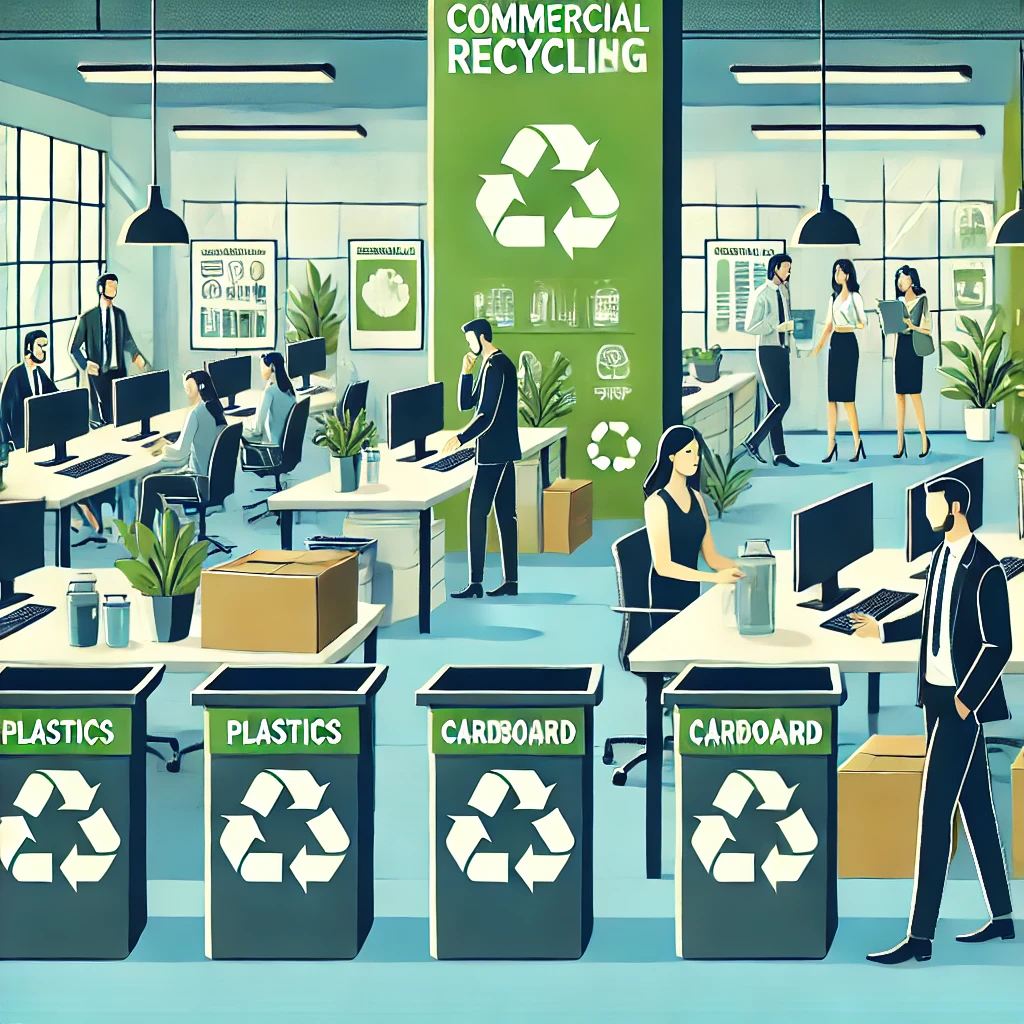Building a Sustainable Brand with Commercial Recycling of Plastics and Cardboard
Sustainability is becoming more important for businesses. Companies are realizing the benefits of eco-friendly practices. With consumers expecting more transparency and responsibility from brands, adopting sustainable methods is now essential. For many businesses, this includes recycling materials like plastics and cardboard. This helps manage waste and shows brands care about the environment, which can improve their reputation and customer loyalty.
By effectively collecting and processing waste, businesses can reduce waste and support a circular economy through commercial recycling. This includes setting up recycling programs and getting employees and customers involved in sustainability efforts. In doing so, brands build stronger connections with their stakeholders while improving their operations.
Commercial Recycling Explained
Commercial recycling involves collecting and processing waste materials to make new products. Businesses help by sorting and storing recyclables like plastics and cardboard in specific areas. The process starts by separating recyclables from regular waste, then transporting them to recycling centers.
There, they are shredded, cleaned, and turned into raw materials ready for manufacturing. Commonly recycled materials include plastic containers, cardboard boxes, paper, and some metals. Recycling helps reduce disposal costs, conserve resources, and lower carbon footprints, boosting employee morale and strengthening connections with eco-conscious customers.

Benefits of Recycling for Businesses
Cost savings come from recycling plastics and cardboard. By keeping materials out of landfills, businesses can reduce disposal costs and cut down on waste collection. Savings go beyond just disposal, as using recycled materials often lowers production costs, leading to overall financial benefits. Reinvesting these savings can improve other parts of the business and help it grow.
Recycling efforts also boost operational efficiency. Organized collection and sorting reduce waste disruptions, making daily operations run more smoothly. A commitment to recycling strengthens a company's public image, attracting environmentally conscious consumers and setting the brand apart in a competitive market.
Building a Recycling Program
Strategic planning is key to a successful recycling program. Businesses should start by evaluating their waste and identifying recyclable materials. This helps create programs that fit the specific needs of the company. Once materials are identified, setting up clearly marked bins for plastics and cardboard around the workplace helps make recycling easier and encourages employee participation.
Sorting is another essential step. Employees should be trained on how to sort materials correctly to avoid contamination. An engaging educational campaign can help boost participation and promote proper sorting. Finally, businesses should work with trusted recycling vendors who follow sustainable practices to create a program that reduces waste and promotes environmental responsibility.
Engaging Employees and Customers
Getting employees and customers involved in recycling shows a commitment to sustainability. Companies can offer training to help employees understand the importance of recycling and how it affects both the environment and the company's reputation. Hands-on workshops can further improve understanding and encourage participation. Regular updates, such as through newsletters or meetings, keep the topic alive and encourage ongoing discussions about sustainability in the workplace.
Engaging customers can take many forms. Campaigns like social media posts or in-store signs help raise awareness of recycling programs and their benefits. Offering incentives, such as discounts or rewards for returning recyclable packaging, encourages participation and fosters a sense of community. Customer feedback can help refine these efforts and build stronger connections. Active involvement establishes the brand as a sustainability leader, contributing to a larger collective impact.
Monitoring and Reporting Progress
Measuring the success of a recycling program involves using tools and metrics that focus on continuous improvement. Key metrics like the amount of materials recycled, landfill diversion rates, and the costs of recycling efforts show how effective the program is. Digital platforms can help track these metrics, making it easier to see progress over time and adjust strategies when needed.
Reporting results to stakeholders ensures transparency and accountability. Regular updates through reports, newsletters, or meetings help nurture pride and commitment within the organization. Highlighting achievements like reduced waste or a smaller carbon footprint not only showcases success but also strengthens relationships with customers and partners. Meanwhile, continuous monitoring and communication build trust and support long-term engagement.
Starting a commercial recycling program brings many benefits to businesses, including saving costs and improving their reputation. By managing waste well and involving employees and customers in sustainability efforts, companies can strengthen their relationships with stakeholders and have a positive environmental impact. Regularly tracking and sharing recycling progress helps build trust and shows a real commitment to sustainability. Over time, businesses can reduce their environmental footprint and build a loyal customer base, becoming leaders in the shift toward eco-friendly practices.